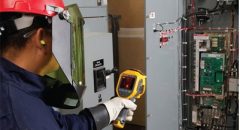Emergency Systems Survivability Analysis
Ensuring critical safety systems stay operational during major accidents in high-risk facilities.
Introduction & Scope
What is Emergency Systems Survivability Analysis (ESSA)
ESSA is the process of evaluating how well emergency systems—like fire alarms, emergency shutdown systems, evacuation setups, and backup power—can continue working during extreme events such as fires, explosions, or chemical leaks.
Why it matters in high-risk facilities
In industries like oil & gas, chemicals, and power plants, failure of emergency systems during a crisis can have catastrophic results. ESSA ensures that these systems remain functional, protecting lives, the environment, and valuable assets.
Industries and systems in scope
ESSA is applicable to industries including oil & gas, LNG, chemical production, fertilizers, and power generation. Key systems assessed include emergency shutdown (ESD), fire and gas detection, fire-fighting equipment, passive fire protection, emergency power, communication systems, and evacuation routes.
Key Concepts and Terminology
Major Accident Hazards (MAH) overview
Major Accident Hazards are events that could lead to fires, explosions, toxic releases, or large-scale damage. Identifying these hazards is the first step in understanding which emergency systems need to be tested for survivability.
Survivability, vulnerability, fail-safe, and redundancy defined
- Survivability: Ability of a system to continue functioning or recover quickly under extreme conditions.
- Vulnerability: How likely a system is to fail when exposed to hazards.
- Fail-safe: Design feature that ensures the system defaults to a safe state in case of failure.
- Redundancy: Backup systems or components that ensure continued functionality if one fails.
Critical emergency systems: types and functions
Emergency systems include detection and alarm setups, emergency shutdown, firefighting, passive protection, evacuation, backup power, and communication. Their primary goal is to protect people, control incidents, and maintain safe conditions until the situation is stabilized.
Methodology & Assessment Steps
Step 1 – Hazard / MAH review
Identify all significant hazards in the facility, including fire, explosion, and toxic release scenarios.
Step 2 – Identification of emergency systems and functions
List all emergency systems in place, define their roles, and connect each system to the specific hazards it protects against.
Step 3 – Vulnerability assessment vs MAH
Assess how each system might be affected by hazards. Could fire, explosion, smoke, or toxic exposure prevent the system from working?
Step 4 – Fail-safe and redundancy evaluation
Check if systems have fail-safe modes and if redundant backups are available to ensure safety functions continue even under failure.
Step 5 – Risk estimation
Estimate the risk of system failure using qualitative or quantitative measures, considering both likelihood and potential consequences.
Step 6 – Recommendation of risk reduction measures
Propose improvements like adding redundancy, relocating equipment, enhancing passive protection, or implementing stricter maintenance routines.
Application & Implementation
Typical facility life-cycle stage (FEED, EPC)
ESSA is usually conducted during the design stage (FEED) and updated during detailed engineering and construction to reflect design changes.
Data sources and interfacing with other studies
ESSA uses information from related studies such as fire and explosion risk assessments, evacuation analysis, and hazard identification reports to ensure consistency and accuracy.
Reporting, tracking and follow-up
The ESSA report includes findings, recommendations, and a system for tracking improvements. Periodic follow-up ensures measures are implemented and systems remain effective.
Challenges & Best Practices
Common pitfalls in survivability assessments
- Underestimating hazard severity or exposure.
- Assuming ideal system performance without accounting for real-world conditions.
- Relying on incomplete or outdated data.
Ensuring independence and robustness of emergency systems
Emergency systems should be physically separate, independently powered, well-maintained, and able to function without relying on other operational systems.
Integrating redundancy and fail-safe design
Design systems so that if one component fails, a backup system continues to work, and the system defaults safely in failure scenarios. Regular testing ensures these measures are effective.
Regulatory, Standards & Compliance Considerations
Relevant international standards and guidelines
Standards like BS EN 61511 guide the design of safety-critical systems. Regulations in high-risk industries emphasize preventing accidents and limiting consequences through proper system design and operation.
Demonstrating ALARP (As Low As Reasonably Practicable)
ESSA helps organizations show that emergency system risks have been reduced to the lowest practicable level by identifying vulnerabilities and implementing mitigation measures.
Audit and verification of survivability performance
Regular testing, inspections, and audits verify that emergency systems continue to perform reliably over their lifecycle.
Conclusion & Future Trends
Summary of key take‑aways
ESSA is essential for ensuring that emergency systems in high-risk facilities remain functional during major accidents, safeguarding lives, assets, and the environment.
Emerging trends
Digital twins and real-time monitoring are improving ESSA effectiveness, allowing organizations to simulate incidents and track system performance more accurately.
Call to action for organisations
Ensure your facility’s emergency systems are ready for the worst. Contact Aura Safety Risk Consultant for a full ESSA assessment and keep your operations safe, compliant, and resilient.
Call us at +91 99994 02106 or
Visit:https://aurasafety.com/contact-us
Get free a quote
Submit your Details
+91 99994 02106
What we offer
Our Services
Identify, evaluate, and control process hazards with expert risk assessments, ensuring safe, reliable, and compliant industrial operations.

Identify, evaluate, and control process hazards with expert risk assessments, ensuring safe, reliable, and compliant industrial operations.

Implement site safety plans, audits, and training to prevent accidents, ensuring safer construction environments and regulatory compliance.

Design, engineer, and audit fire protection systems ensuring reliable performance, asset safety, and adherence to national safety standards.

Empowering workforce with certified HSE, fire, and industrial safety training programs for skill development and regulatory competence.

Create immersive, interactive VR safety training modules for realistic learning experiences in hazard recognition and emergency preparedness.
How it works
Industry Consultation
Project Scoping & Industry Brief
Service Selection
Site Visit & Inspection
Audit & Analysis
Report Submission & Discussion
Frequently Ask Question
ESSA is needed whenever a facility has major hazards and relies on emergency systems to protect people and assets.
ESSA focuses specifically on whether emergency systems can survive hazards, while HAZOP identifies hazards and QRA calculates risks.
Yes, ESSA is useful for any high-risk facility with critical emergency systems.
A detailed report listing system vulnerabilities, fail-safe/redundancy evaluation, risk assessment, and actionable recommendations.
After major design changes, modifications, or periodically during operations to account for new hazards.
It ensures safety functions continue even if one system component fails.
By showing that vulnerabilities are mitigated and risks are minimized to the lowest reasonably practicable level.
